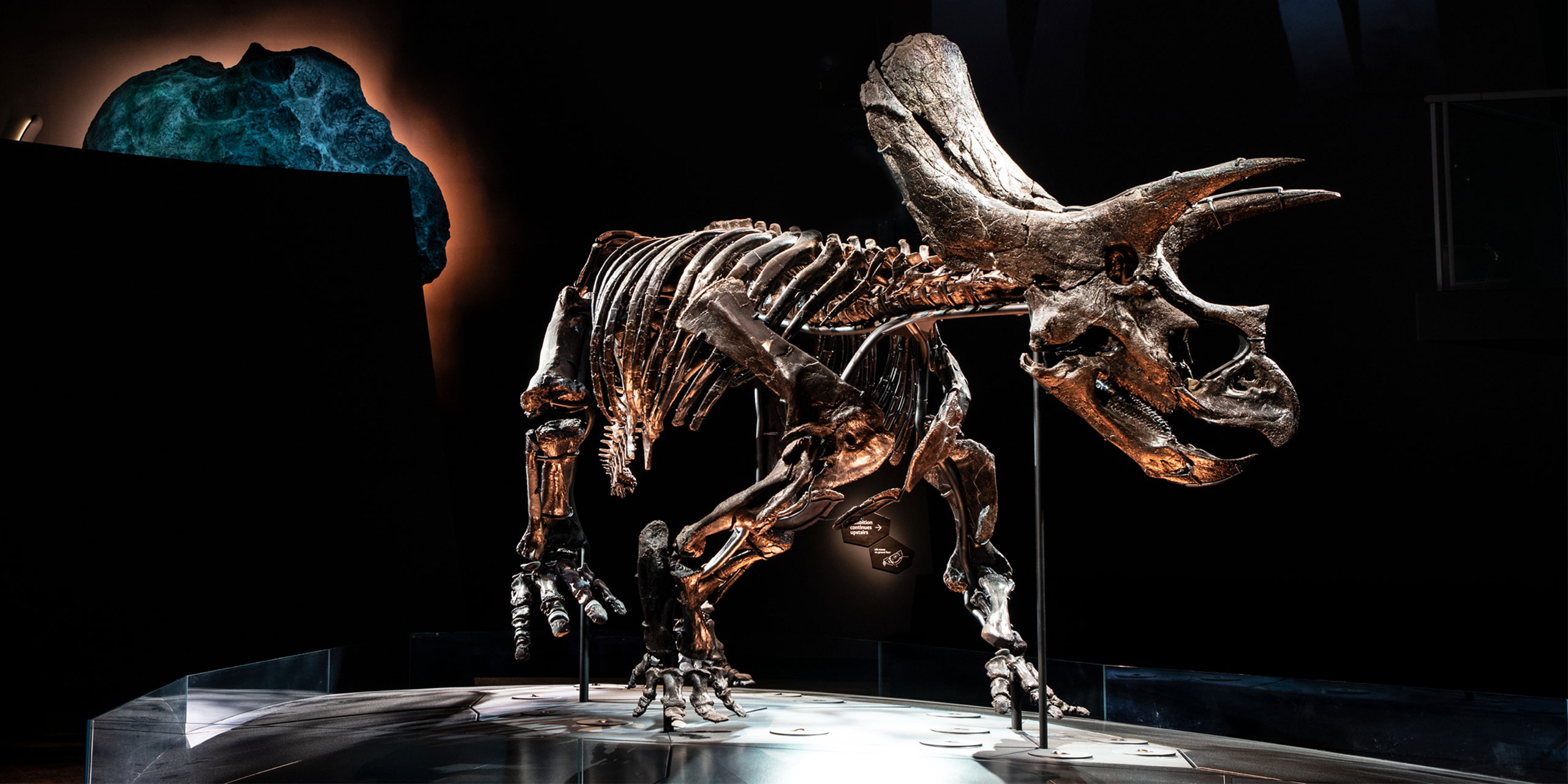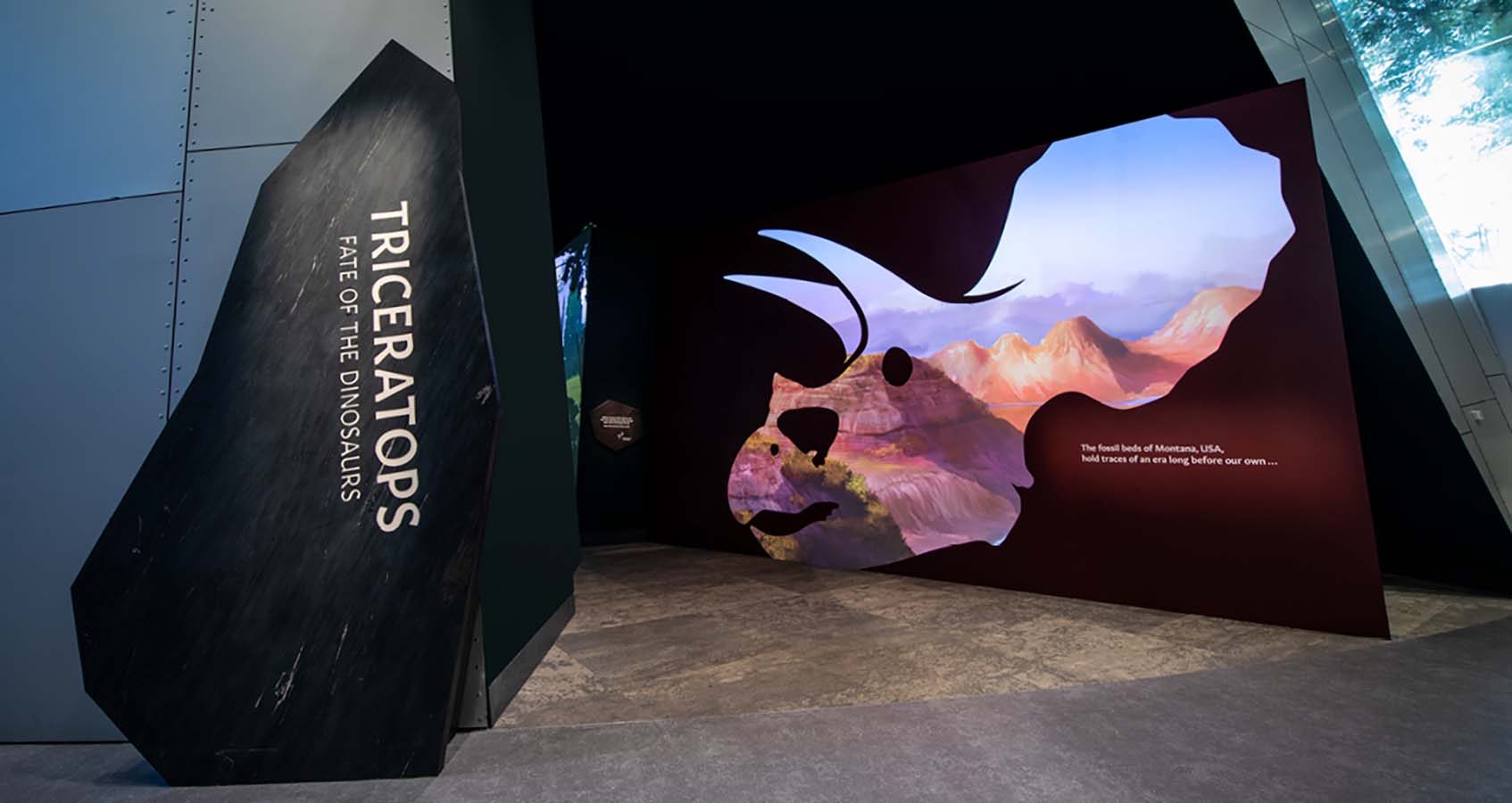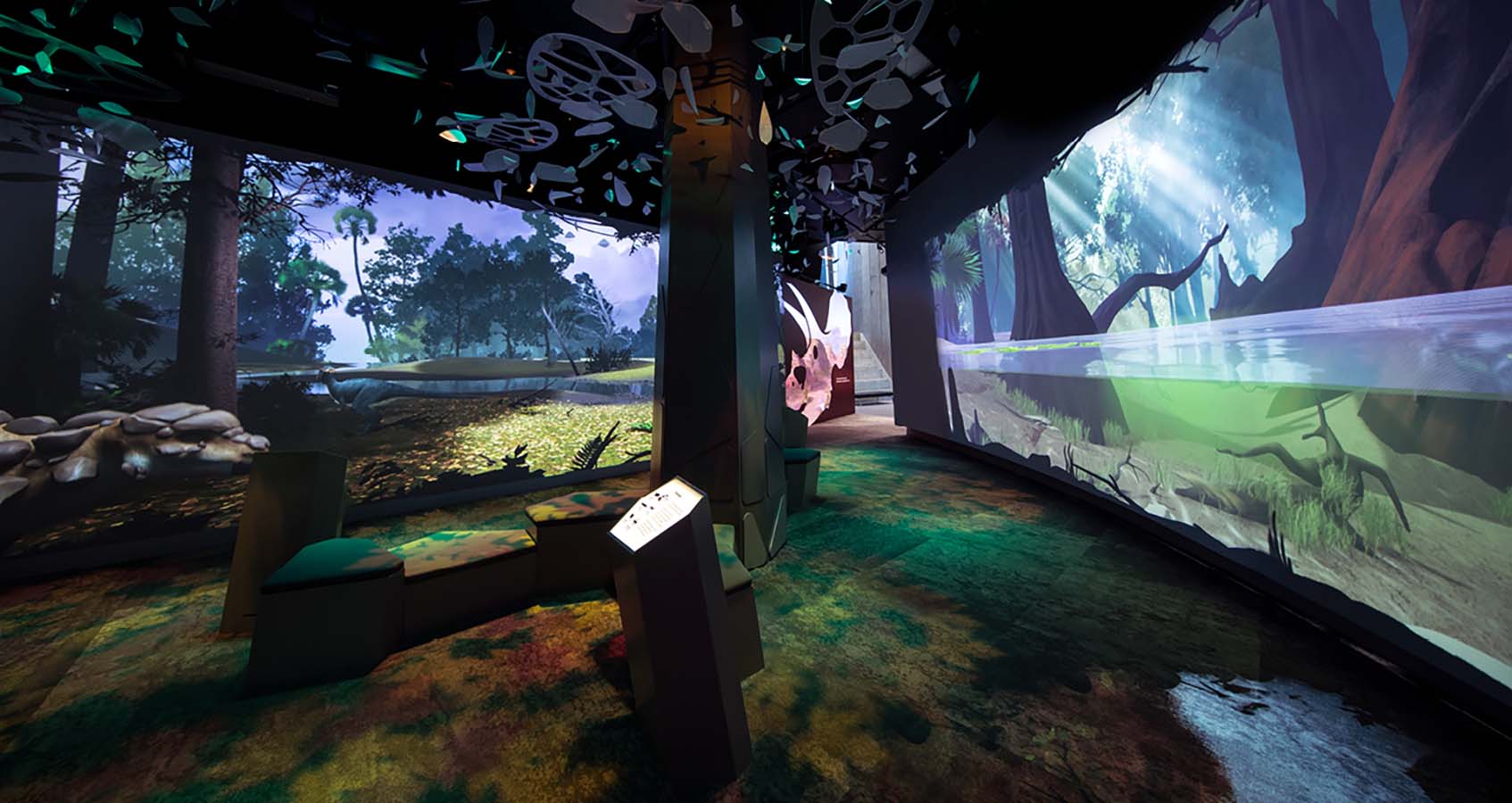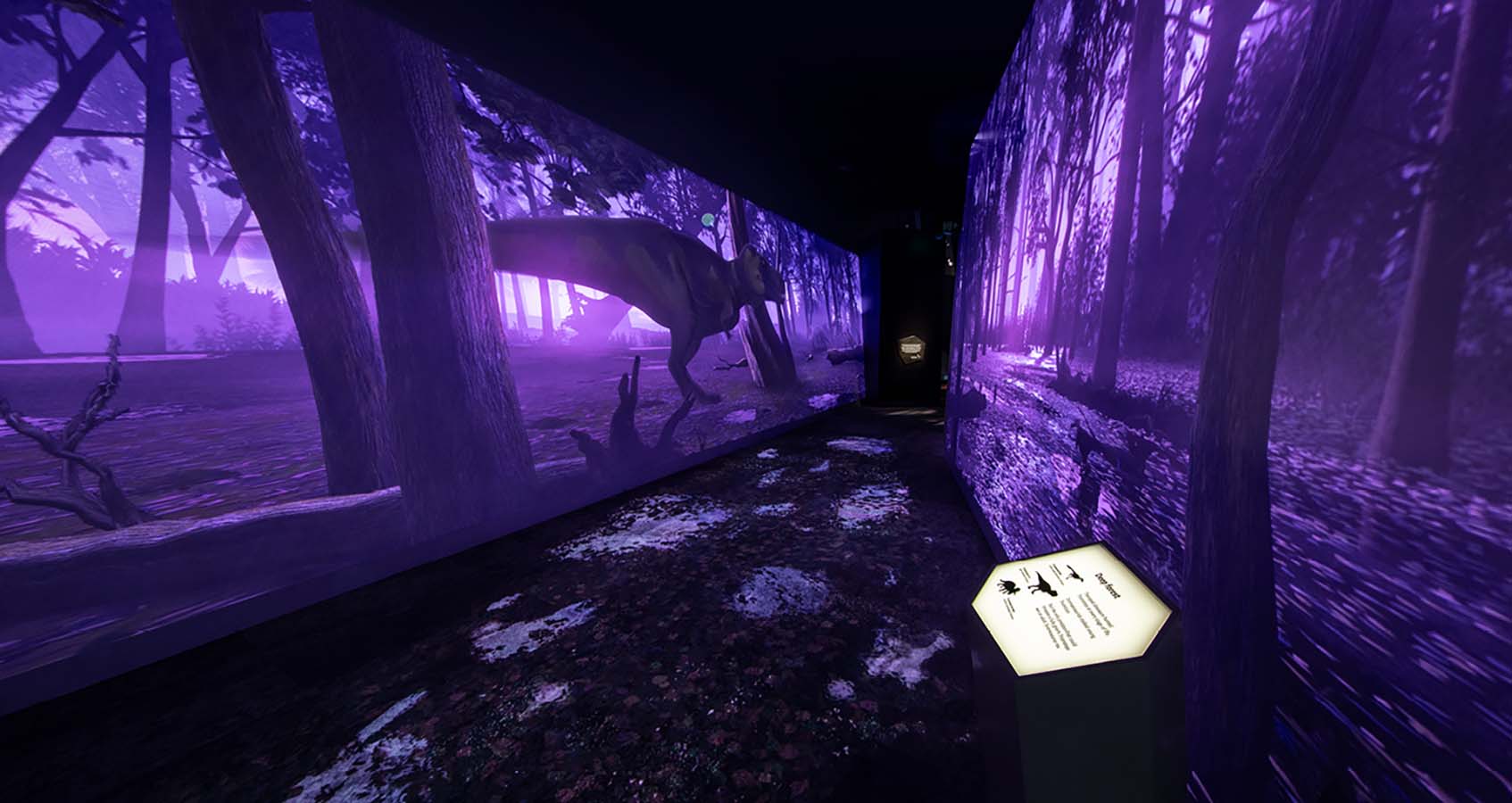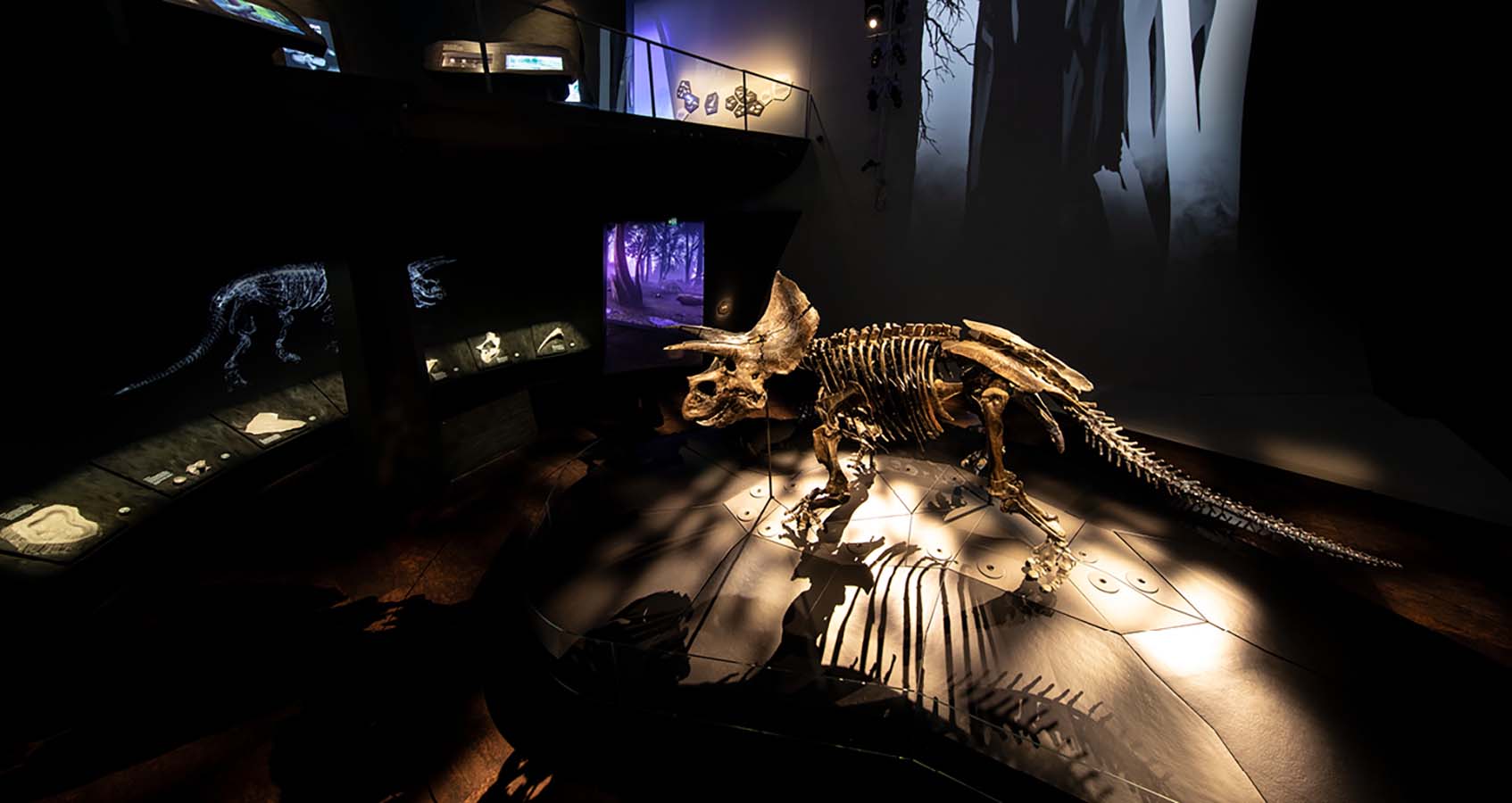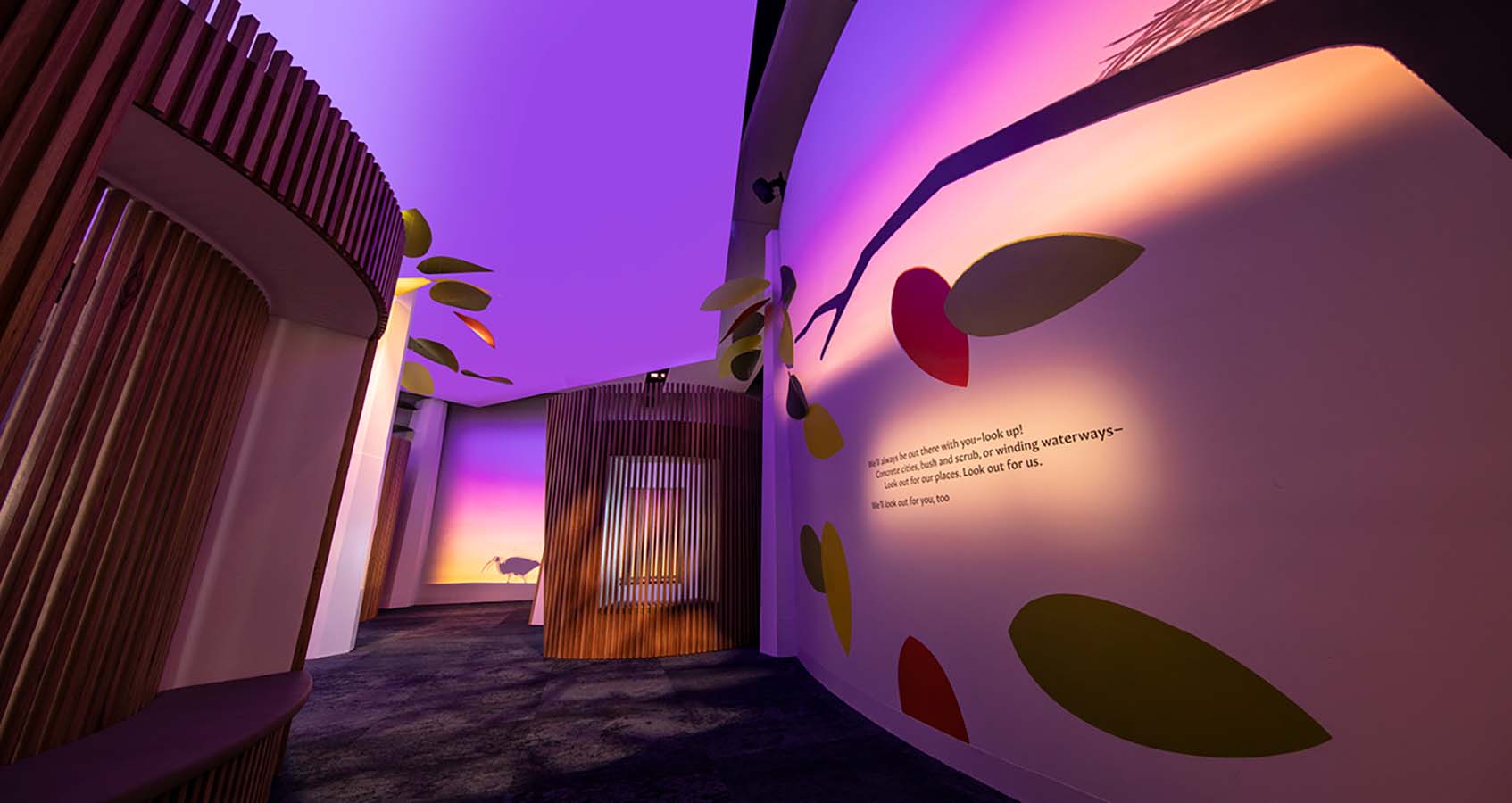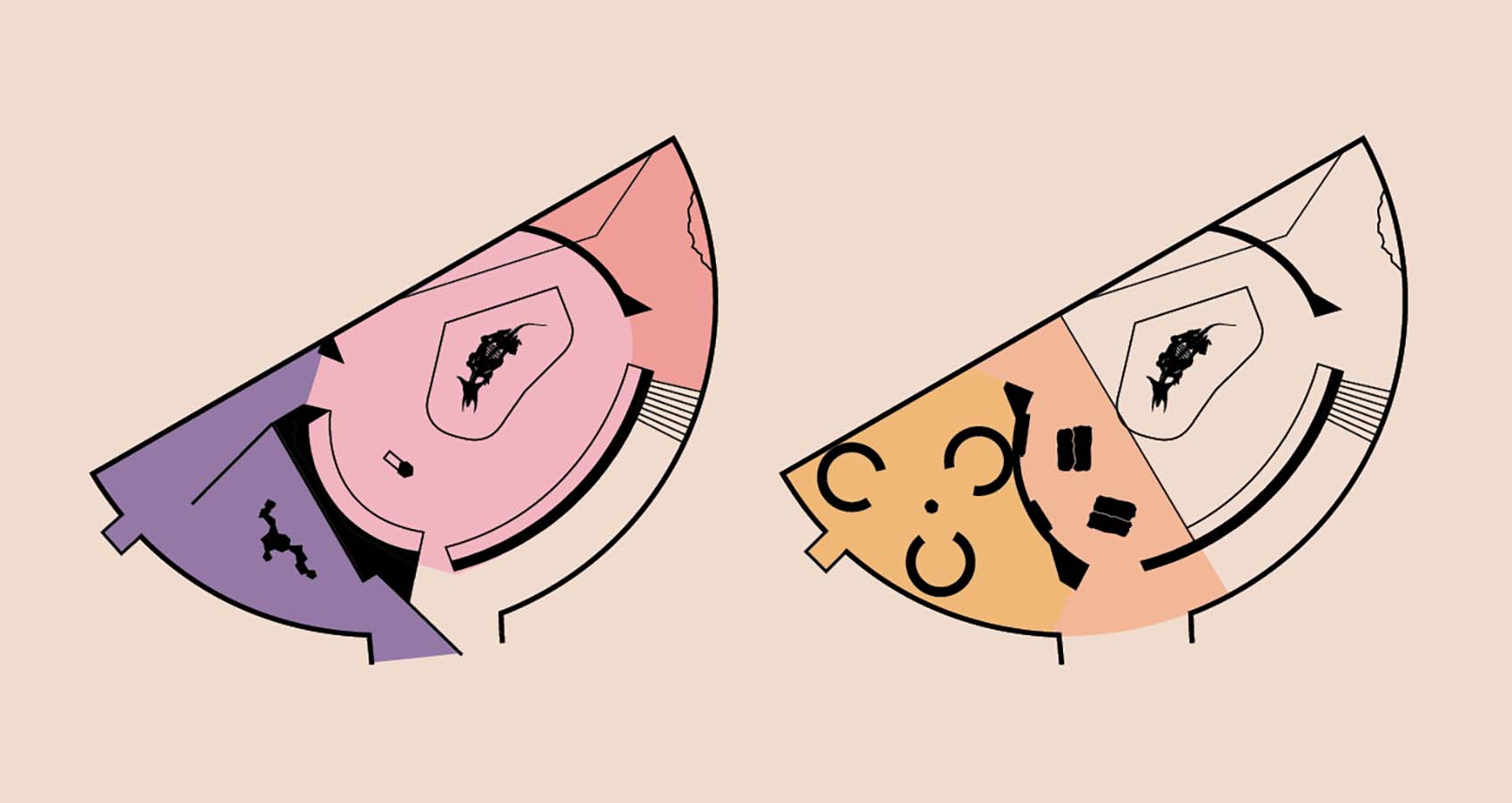The design process for Triceratops: fate of the dinosaurs was rigorous and collaborative with staff responding creatively to the challenges posed by Covid-19. Following the shaping of a story and experience brief, visual concepts for the physical interpretation of the experience were drafted for feedback, feasibility assessments and stakeholder approval. A developed design phase saw the designs progress in collaboration with our creative content partners and in-house fabricators. Finalisation and documentation of the designs was undertaken in consultation with fabricators and experts on matters of compliance and accessibility requirements.
Since the exhibition has an anticipated lifespan of around 10 years the designs were also reviewed with a view to durability and operational requirements. For quality assurance, prototypes of certain elements were fabricated for testing of materials and functionality. In addition, throughout the fabrication and installation process designers were onsite to ensure designs were finished to high standards expected. Over the course of design production our team worked with over 30 local creative industries, including stone masons, illustrators, glaziers, printers, upholsters, sound and lighting designers, carpenters and prop makers.
The diligence and commitment to excellence demonstrated by the design team has resulted in an exhibition experience that has amazed visitors. In an online survey of over 700 visitors, 92% rated the design as good or very good and a number of visitors commented that the display of the Triceratops is like a work of art. The colours, materials, lighting and atmospheric elements developed by our designers successfully evoked the connection we were striving for between the visitor and the specimen. As one visitor commented, ‘It's almost a spiritual experience -world-class.’

